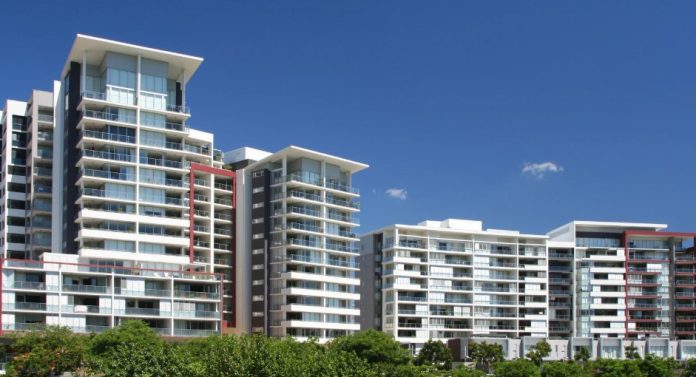Table of Contents
Sustainable property development has evolved from niche interest to mainstream priority across the UK housing market. This shift reflects growing environmental awareness, changing regulatory requirements, and increasing recognition of the financial benefits that eco-friendly features bring to property values.
In today’s market, it’s increasingly important for homeowners to understand how sustainability features can impact my property value.
The Evolution of Sustainable Housing
The UK’s eco-friendly housing landscape has transformed dramatically over the past decade:
From Novelty to Necessity

What began as experimental eco-homes championed by environmental enthusiasts has evolved into standard practice for major developers. This transition reflects both regulatory pressure and market demand, with buyers increasingly prioritising sustainability features when making purchasing decisions.
Early sustainable developments often compromised on aesthetics or convenience for environmental performance. Today’s eco-developments seamlessly integrate sustainability with contemporary design, creating homes that are both environmentally responsible and desirable living spaces.
Regulatory Drivers
Government policy has significantly accelerated this trend:
- The Future Homes Standard requires new homes from 2025 to produce 75-80% less carbon emissions than current standards
- Minimum Energy Efficiency Standards (MEES) prohibiting the rental of properties below EPC E (moving to C by 2025)
- Planning requirements increasingly favour developments with strong sustainability credentials
- Building regulations progressively tightening energy performance requirements
- Net zero carbon targets driving innovation across the construction industry
These regulatory frameworks have transformed sustainability from an optional extra to a fundamental requirement, reshaping development approaches nationwide.
Key Features of Modern Eco-Developments
Today’s sustainable developments incorporate multiple elements:
Energy Performance
Advanced energy efficiency forms the foundation of modern eco-developments:
- Triple glazing and superinsulation significantly reducing heating requirements
- Air-source and ground-source heat pumps replacing gas boilers
- Solar PV systems with battery storage enabling energy independence
- Smart home technology optimising energy usage based on occupancy patterns
- Passive solar design maximising natural heat gain in winter months
These features dramatically reduce both carbon emissions and energy bills, creating compelling selling points in an era of high energy costs.
Sustainable Materials
Environmentally responsible construction materials feature prominently:
- Timber from certified sustainable sources replacing more carbon-intensive materials
- Recycled and reclaimed materials reducing embodied carbon
- Low-VOC paints and finishes improving indoor air quality
- Natural insulation materials like hemp, wool, and recycled paper
- Locally-sourced materials reducing transportation impacts
These material choices reduce environmental impact while often creating healthier indoor environments.
Water Management

Comprehensive water conservation strategies include:
- Rainwater harvesting systems supplying water for toilets and gardens
- Gray water recycling reducing fresh water demand
- Permeable paving preventing runoff and supporting groundwater recharge
- Sustainable drainage systems (SuDS) managing flood risk naturally
- Water-efficient appliances and fixtures reducing consumption
These approaches address both water scarcity and flood resilience – increasingly important considerations in the UK climate.
Biodiversity Enhancement
Integration with natural systems is increasingly prioritised:
- Green roofs and living walls supporting insect and bird populations
- Native planting schemes enhancing local ecology
- Wildlife corridors connecting developments to wider habitats
- Community growing spaces promoting local food production
- Retention and enhancement of existing natural features
These elements support declining wildlife populations while creating more attractive living environments with proven wellbeing benefits.
Regional Leaders in Sustainable Development
Several UK regions have established themselves as pioneers:
Southwest England
Devon and Cornwall lead in small-scale eco-developments that blend sensitively with rural landscapes. Projects like The Paddock in Cornwall demonstrate how community-scale developments can achieve near self-sufficiency while enhancing local environments.
Scotland
Scotland’s more ambitious building regulations have spurred innovation, with developments like Chapelton in Aberdeenshire setting new standards for large-scale sustainable communities combining traditional architectural styles with cutting-edge environmental performance.
Urban Regeneration Areas
Former industrial sites in cities like Manchester, Birmingham, and Sheffield have become testbeds for sustainable urban living. Projects like Port Loop in Birmingham demonstrate how brownfield regeneration can create environmentally exemplary neighbourhoods while revitalising urban areas.
Market Performance and Value Impact
For homeowners considering whether to “value my home” in today’s market, the growing emphasis on sustainability has significant implications:
Price Premiums
Research consistently shows price premiums for sustainable properties:
- Homes with EPC ratings of A/B typically command 5-10% premiums over equivalent D-rated properties
- Energy-efficient new builds sell up to 14 days faster than less efficient equivalents
- Properties with renewable energy installations attract particular interest in regions with high energy costs
- Developments with strong green credentials maintain value better during market downturns
- Homes with exceptional sustainability features often attract competitive bidding from environmentally-conscious buyers
These premiums reflect both the tangible savings from reduced running costs and the growing premium buyers place on environmental responsibility.
Financing Advantages
Green finance products provide additional benefits:
- Major lenders now offer green mortgages with preferential rates for energy-efficient properties
- Some lenders provide additional borrowing capacity for homes with low running costs
- Green renovation mortgages support improvements to existing properties
- Better availability of long-term fixed rates for highly efficient homes
- Reduced stress testing requirements reflecting lower energy cost vulnerability
These financial advantages further enhance the value proposition of sustainable properties.
The Retrofit Challenge

While new eco-developments set standards for sustainability, existing housing stock presents the greater challenge:
Whole-House Approaches
Comprehensive retrofit strategies address multiple aspects simultaneously:
- Fabric-first approaches prioritising insulation and airtightness
- Ventilation upgrades ensuring healthy indoor air quality
- Heating system replacements eliminating fossil fuel dependency
- Smart technology integration optimising performance
- Renewable energy installation reducing grid dependency
These whole-house approaches achieve much better results than piecemeal improvements, though they require significant investment.
Value Enhancement Through Retrofit
Strategic improvements can substantially increase property values:
- Deep retrofits achieving 60%+ energy reductions can add 15-20% to property values in high-demand areas
- Homes upgraded to EPC B can command similar premiums to new builds with equivalent ratings
- Properties with heat pumps and solar attract particular buyer interest as energy independence becomes more valued
- Heritage properties combining period features with modern performance achieve exceptional premiums
- Homes demonstrating resilience to climate impacts (flooding, overheating) increasingly command value advantages
For homeowners asking “should I value my home?” after completing sustainability improvements, professional valuation is particularly important as automated valuation models often fail to fully capture the value of these enhancements.
Future Directions
Several emerging trends will likely shape the next generation of eco-developments:
Embodied Carbon Focus
Attention is shifting beyond operational energy to address carbon emissions from construction:
- Mass timber construction significantly reducing embodied carbon
- Adaptive reuse of existing buildings avoiding demolition emissions
- Carbon-negative materials like hempcrete sequestering carbon long-term
- Circular economy approaches prioritizing future disassembly and material reuse
- Whole-life carbon assessments becoming standard in planning applications
This holistic approach addresses the significant environmental impact of construction materials and processes.
Resilience Integration
Adaptation to climate change is increasingly incorporated:
- Flood-resilient design in vulnerable locations
- Natural cooling strategies addressing overheating risks
- Drought-resistant landscaping reducing water requirements
- Microgrids providing energy security during grid disruptions
- Food production integration supporting local resilience
These features protect value in a changing climate while providing immediate lifestyle benefits.
Community-Centered Design
Social sustainability complements environmental performance:
- Shared facilities reducing individual resource requirements
- Integrated workspaces supporting reduced commuting
- Car-free designs prioritising walking, cycling, and public transport
- Intergenerational housing supporting diverse communities
- Communal energy systems enhancing efficiency and resilience
These approaches create more cohesive communities while reducing environmental footprints.
Conclusion
The rise of eco-friendly property developments represents more than a passing trend, it signals a fundamental shift in how homes are designed, built, and valued. For homeowners wondering “should I value my home?” in this evolving market, understanding how sustainability features influence property worth has become essential.
Properties incorporating strong environmental credentials increasingly command significant advantages in marketability, valuation, and financing options.
As climate considerations and energy costs continue to influence buyer priorities, the value differential between sustainable and conventional properties is likely to widen further, making eco-friendly features increasingly central to property values across the UK market.


